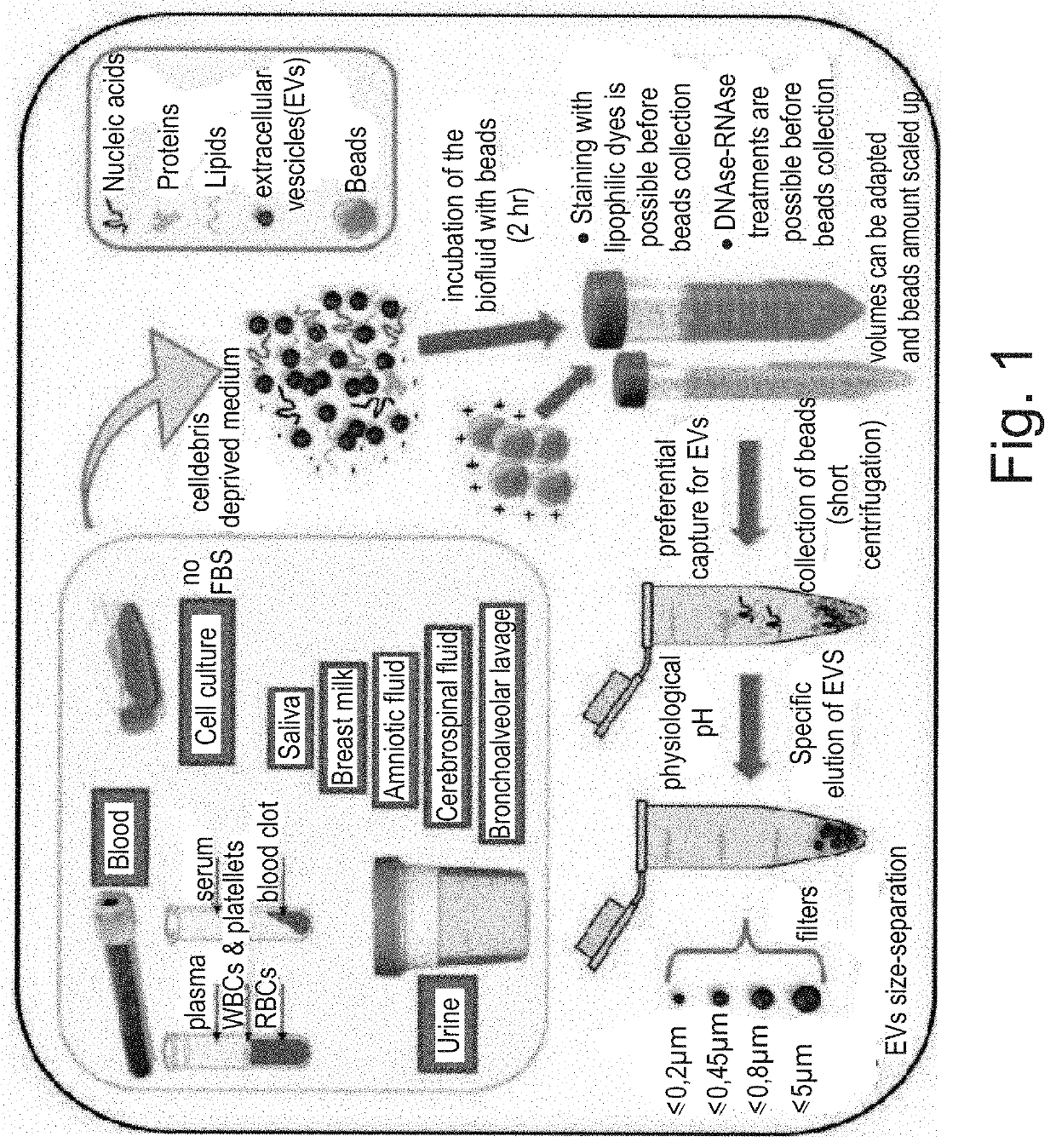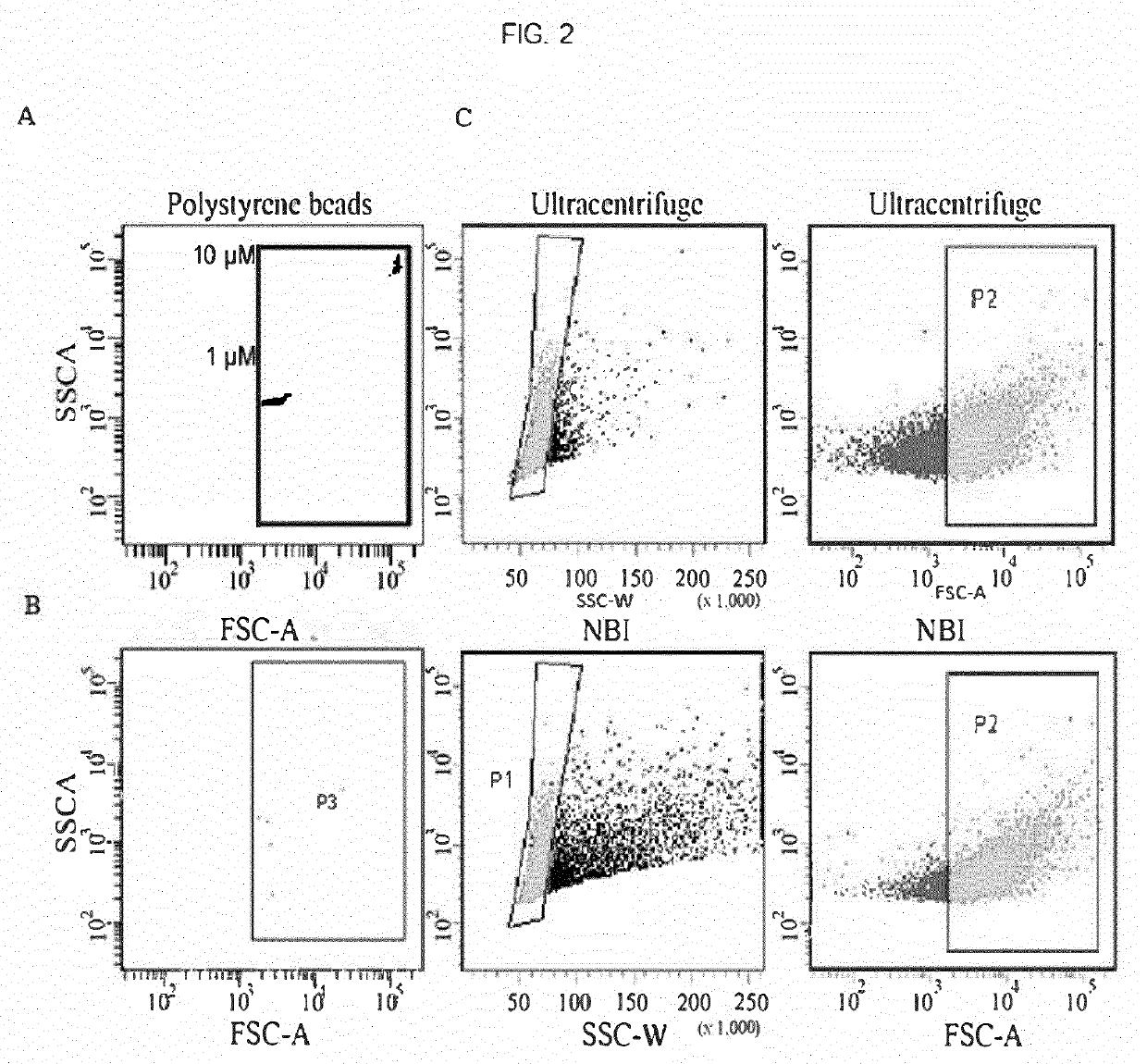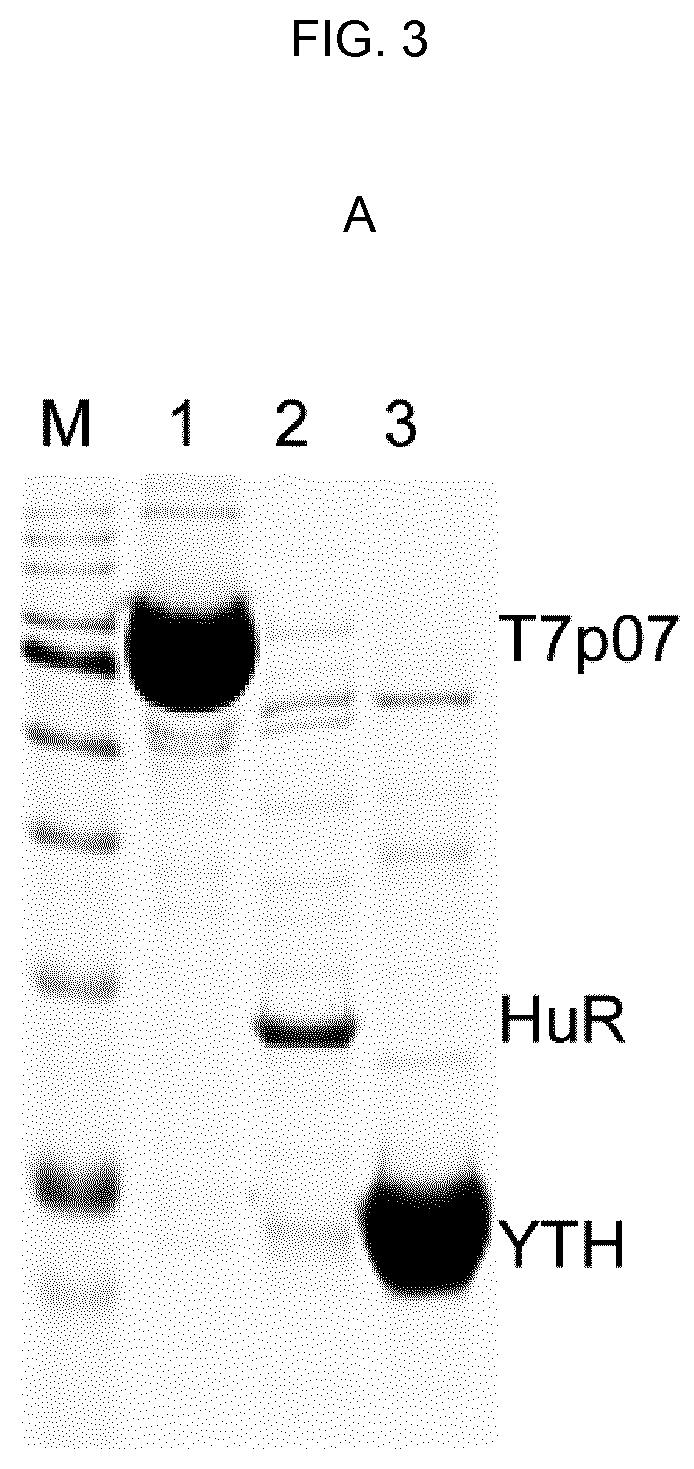Method and stationary phase for isolating extracellular vesicles from biological material
- Summary
- Abstract
- Description
- Claims
- Application Information
AI Technical Summary
Benefits of technology
Problems solved by technology
Method used
Image
Examples
example 1
on of the Nickel Ion Functionalized Beads
[0102]The procedure for beads functionalization is carried out as follows:[0103]commercially available NiNTA Sepharose High Performance beads (GE Healthcare product code 71-5027-67 or 17-5268-01) was taken as starting beads; the net charge values were measured and resulted in the range from 3 to 25 mV at 22-25° C. in PBS, as detected using the Malvern Zetasizer instrument.[0104]starting beads are subjected to stripping by one or more washing with an aqueous solution supplemented with 200-300 mM NaCl or KCl, 100-300 mM EDTA or EGTA, 300-500 mM Imidazole, or a solution containing cationic chelating agents with a wide pH range (generally between 5 and 8), and one or more washing with bi-distilled water (18.2 MO cm−1);[0105]A 40 mg / ml suspension of starting beads (NiNTA Sepharose High Performance, GE Healthcare, 17-5268-01, 34 μm known nominal size), previously subjected to stripping treatment aliquoted in 50 ml tubes is re-suspended in a double ...
example 2
ion Method from a Biological Sample
[0113]CBeads can be added dropwise to the surface of a biological liquid (clarified by cellular debris by 2800 rcf centrifugation) collected in tubes of any size and incubated at room temperature for 30 minutes in a volumetric ratio of 20 μl / ml.
[0114]Biological fluid may be cell culture medium mostly containing 1.5% fetal bovine serum (FBS)-PBS at pH 7.4 dilution is allowed if FBS percentage is higher; liquid biopsy sample (whole blood or serum or plasma, urine, cerebrospinal fluid, milk, saliva).
[0115]EV isolation from the biological sample is carried out as follows:
[0116]CBeads are incubated with the biological sample with gentle orbital rotation (300-600 rpm) for 30 minutes at room temperature, at the end of which the tube is stabilized in a vertical position to allow gravity settling or weak centrifugation (100-400 rcf) of the CBeads (7-15 minutes) at the bottom of the tube.[0117]The supernatant is completely sucked up and discarded.
[0118]EV pu...
example 3
n of Particle Number (>0.5 μm) Isolated by UC or by NBI
[0128]NBI was applied to isolate vesicles released from U87 gliomas cells and the particle number with ≥0.5 μm in diameter (as estimated by flow cytometry) is comparable to that obtained using differential UC, unlike few events captured by non-functionalized beads (FIG. 2A).
PUM
| Property | Measurement | Unit |
|---|---|---|
| Temperature | aaaaa | aaaaa |
| Molar density | aaaaa | aaaaa |
| Molar density | aaaaa | aaaaa |
Abstract
Description
Claims
Application Information
 Login to View More
Login to View More - R&D
- Intellectual Property
- Life Sciences
- Materials
- Tech Scout
- Unparalleled Data Quality
- Higher Quality Content
- 60% Fewer Hallucinations
Browse by: Latest US Patents, China's latest patents, Technical Efficacy Thesaurus, Application Domain, Technology Topic, Popular Technical Reports.
© 2025 PatSnap. All rights reserved.Legal|Privacy policy|Modern Slavery Act Transparency Statement|Sitemap|About US| Contact US: help@patsnap.com



